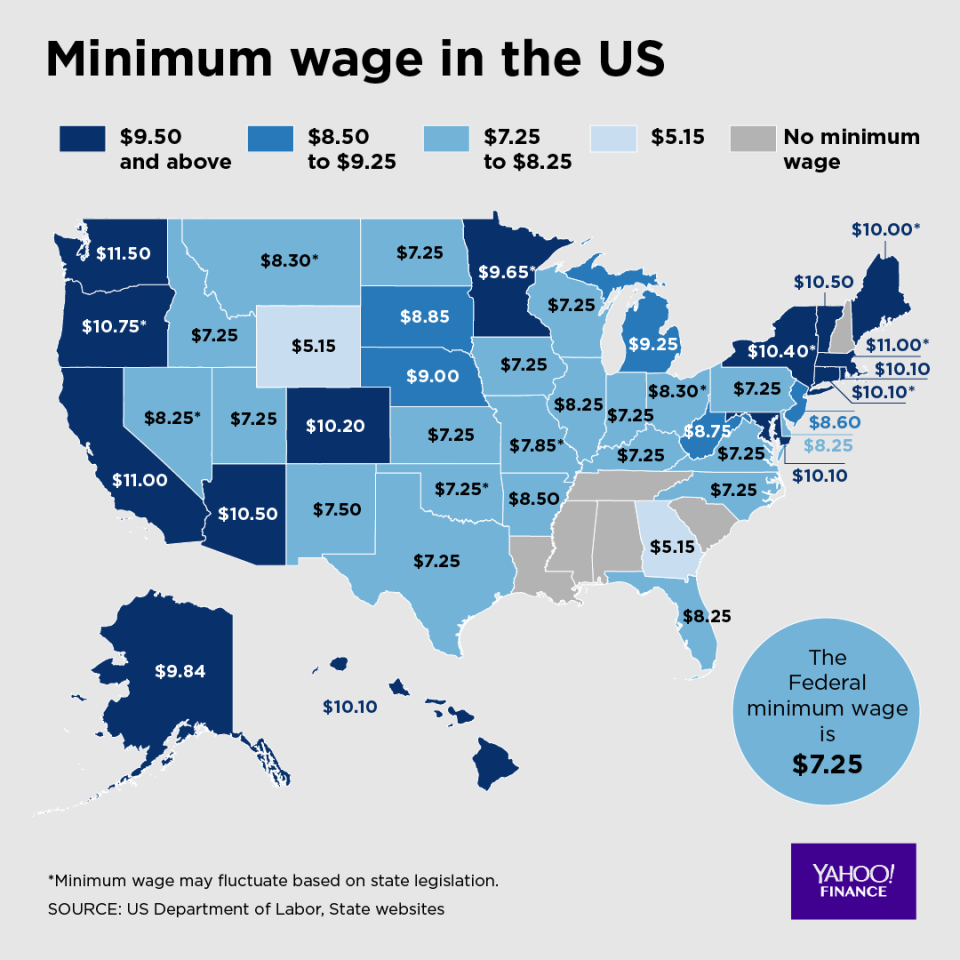Amazon's minimum wage is now $15 — here's how that compares to US states
Amazon (AMZN) announced Tuesday its plan to raise the company’s minimum wage for all employees, including about 100,000 seasonal workers, to $15 per hour. The change comes after much criticism, notably from Sen. Bernie Sanders.
After the announcement, the Vermont lawmaker offered his congratulations to Amazon CEO Jeff Bezos for “doing exactly the right thing.”
The online retailer has often faced backlash over its relatively low wages for warehouse workers as Bezos has amassed a fortune, recently being named the richest person in the world with over $150 billion.
Minimum wage by state
Since 2009, the federal minimum wage has remained unchanged at $7.25. Adjusted for inflation, that $7.25 equates to only $8.47 in 2018 dollars, but when taking into account the wealth of the U.S., The Economist estimated in 2015 that the minimum wage should be somewhere around $12/hour given the wages paid across the rest of the OECD, a group of mostly wealthy nations.
Many states have taken the initiative to up their workers’ pay, even without a nationwide increase. According to the Department of Labor, 29 states, plus Washington, D.C. currently pay higher than $7.25, two have a lower minimum wage, and five states have no local laws requiring a minimum wage for workers.

Topping the list of states making the greatest efforts are California and New York. Both states have incremental programs in place that increase the minimum wage year-over-year. Employers in New York City will be required to pay workers at least $15 per hour by the end of 2019, with the rest of state following by 2022. Similarly, California is increasing the minimum wage by $1 on January 1 each year until 2023.
As federal law remains unchanged, and states’ updates to minimum wage move slowly, companies such as Amazon are taking the initiative to compensate workers more fairly. Even despite the praise from both Sanders and President Donald Trump, some Amazon employees are saying they might end up making less now that the company has instituted the pay raises. (That’s because it’s also eliminating existing financial incentives and bonus programs starting Nov. 1.)
Nevertheless, the trend toward higher wages makes economic sense. In December 2017, Yahoo Finance reported that despite strong economic growth, wage increases have hardly made a positive impact on those near the lower end of the spectrum.
“For much of the past three decades, the wages of those at the bottom of the wage distribution have failed to keep up with overall economic gains. Most of the wage increase has occurred among the top half of the wage distribution, especially since the 1990s,” UMass Amherst economics professor Arindrajit Dube told Yahoo Finance’s Melody Hahm.
READ MORE: Some Amazon employees say they will make less after the raise